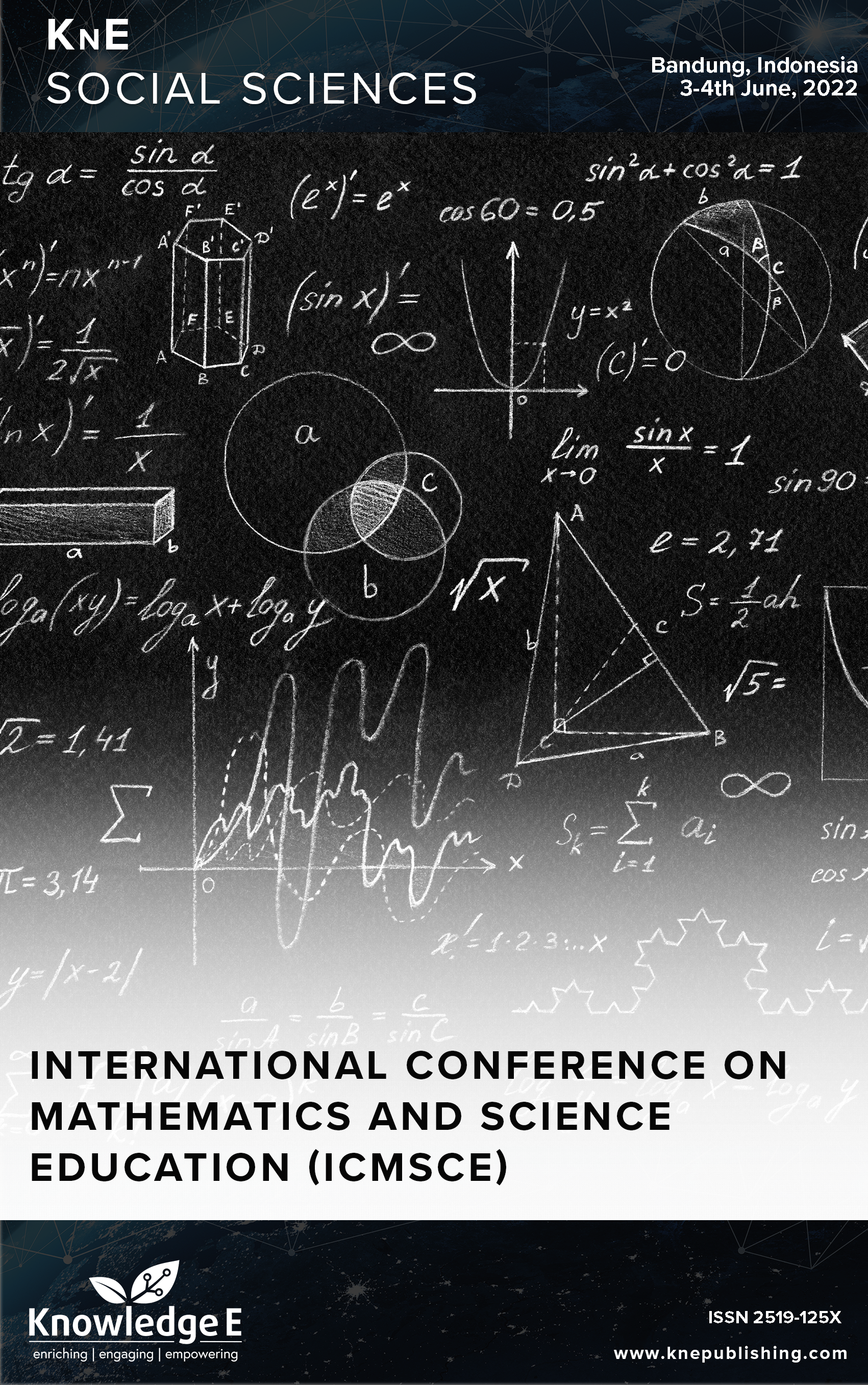The Difficulty of Students in Utilizing Online Learning Resources to Apply Creative Thinking
DOI:
https://doi.org/10.18502/kss.v9i8.15616Abstract
Creative thinking skills can create creative ways and harmonize knowledge with time. However, the analysis of the difficulties of mathematics education students has not been widely discussed, especially in the use of online learning resources. This study analyzes 15 fourth-semester mathematics education students’ difficulties in using online learning resources to apply creative thinking in solving math problems. Instruments consist of creative thinking skills test and a scale of online learning difficulties. The study results found that all subjects were familiar with online learning resources. However, its utilization was still minimal due to various difficulties, such as unstable signals, high quota costs, confusion about choosing an abundance of information, and uncertainty about the correctness of the information. These difficulties have an impact on the limited knowledge of the subject and the ability to generate ideas. Fluency in creative thinking was low. Subject ideas tend to be limited and routine. Subjects prefer to present an idea and immediately apply it to problem-solving. Flexibility is not visible, and errors in responding to ideas still occur. As a result, when the idea is executed incorrectly, the problem-solving is also wrong.
Keywords: difficulty of student, online learning resource, creative thinking
References
Moore JL, Dickson-Deane C, Galyen K. E-Learning, online learning, and distance learning environments: are they the same? Internet High Educ. 2011;14(2):129–35. DOI: https://doi.org/10.1016/j.iheduc.2010.10.001
Enriquez MA. “Students perceptions on the effectiveness of the use of edmodo as a supplementary tool for learning,” DLSU Research Congress. p. 2014.
So S. Mobile instant messaging support for teaching and learning in higher education. Internet High Educ. 2016;31:32–42. DOI: https://doi.org/10.1016/j.iheduc.2016.06.001
Kumar V, Nanda P. Social media in higher education: a framework for continuous engagement. Int J Inf Commun Technol Educ. 2019;15(1):109–20. DOI: https://doi.org/10.4018/IJICTE.2019010107
Sari W, Rifki A, Karmila M. “Analisis kebijakan pendidikan terkait implementasi pembelajaran pada masa darurat covid 19.,” Mappesona. vol. 3, no. 2, p. 2020.
Prawiyogi AG, Purwanugraha A, Fakhry G, Firmansyah M. “Efektivitas pembelajaran jarak jauh terhadap pembelajaran siswa di SDIT cendekia purwakarta.,” Jurnal pendidikan dasar. vol. 11, no. 1, pp. 94–101, 2020. DOI: https://doi.org/10.21009/jpd.v11i1.15347
Golann SE. Psychological study of creativity. Psychol Bull. 1963 Nov;60(6):548–65. DOI: https://doi.org/10.1037/h0041573
Jackson P, Messick S. “The person, the product, and the response: conceptual problems in the assessment of creativity.,” p. 1964. DOI: https://doi.org/10.1002/j.2333-8504.1964.tb00695.x
Tammadge A. Creativity: presidential address to the mathematical association at the annual conference, april 1979. Math Gaz. 1979;63(425):145–63. DOI: https://doi.org/10.2307/3617885
Pehkonen E, Helsinki. “Analyses: fostering of mathematical creativity. Volume 29. ZDM - International Journal on Mathematics Education; 1997. pp. 63–7. DOI: https://doi.org/10.1007/s11858-997-0001-z
Cho S, Kim H. Enrichment programs for nurturing creativity of the korean gifted. Gifted Education International. 2003;18(2):153–63. DOI: https://doi.org/10.1177/026142940301800205
Suripah S, Sthephani A. Kemampuan berpikir kreatif matematis mahasiswa dalam menyelesaikan akar pangkat persamaan kompleks berdasarkan tingkat kemampuan akademik. PYTHAGORAS: Jurnal Pendidikan Matematika. 2017;12(2):149–60. DOI: https://doi.org/10.21831/pg.v12i2.16509
Gunawan I, Suraya S, Tryanasari D. “Hubungan kemampuan berpikir kreatif dan kritis dengan prestasi belajar mahasiswa pada mata kuliah konsep sains ii prodi ikip pgri madiun.,” Jurnal Pendidikan Dasar dan Pembelajaran. vol. 4, no. 1, pp. 10–40, 2014. DOI: https://doi.org/10.25273/pe.v4i01.304
Haylock D. Recognising mathematical creativity in schoolchildren. Educ Stud Math. 1987;18(1):59–74. DOI: https://doi.org/10.1007/BF00367914

